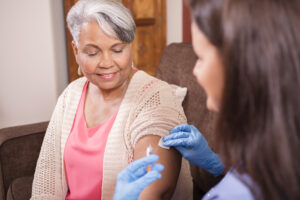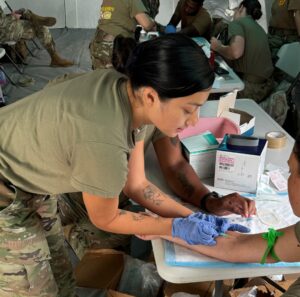As a woman, you may already be familiar with certain conditions and diseases that might affect you. One such condition is osteoporosis, a medical condition characterized by weakening bones, increasing their fragility. It’s especially prevalent in women, who may be at greater risk because of fewer estrogen hormones after menopause. In this blog post, we will look at the causes and symptoms associated with osteoporosis in women, as well as strategies for managing and preventing it.
Causes and risk factors
Osteoporosis is a disease that thins the framework of bones, causing them to become brittle and weak. It occurs when the creation of new bone tissue doesn’t keep up with the loss of old bone. Osteoporosis fractures can happen anywhere in the body but are most likely to occur in the wrist, spine and hip.
Although osteoporosis can occur in both men and women, it is much more likely to develop in women- especially those who are white, Asian, or post-menopausal. Some medical conditions such as overactive thyroid, chronic lung disease, endometriosis, cancer, kidney disease, rheumatoid arthritis, celiac disease, Vitamin D deficiency and eating disorders can raise your risk of osteoporosis. Other risk factors include:
- Inactivity
- Long-term use of glucocorticoids, antiseizure drugs or antacids
- Low levels of estrogen (in women) or testosterone (in men)
- History of gastrointestinal surgery
Diagnosis and treatment
Osteoporosis has no symptoms until it causes a bone fracture. However, bone density tests can provide useful information about your bone health. Women aged 65 and older and men aged 70 and older should have periodic bone density tests. Younger people with the following warning signs should talk to their doctor about getting a bone scan:
- Fractures after age 50
- Back pain caused by a fractured or collapsed vertebra
- Loss of height or stooped posture
- Family history of osteoporosis and fracture
- Medical conditions or medication that causes bone loss
If you are diagnosed with osteoporosis, your doctor will recommend dietary and lifestyle changes to help slow down bone loss. They may also prescribe an appropriate medication based on the extent of your bone loss and your medication tolerance.
Prevention
You can take several steps to reduce your risk of developing osteoporosis.
Increase your calcium intake
Women aged 50 and younger and men aged 70 and younger should consume 1,000 milligrams of calcium daily. Women over 50 and men over 70 should consume 1,200 milligrams of calcium daily. Foods such as low-fat or fat-free milk and yogurt, greens, tofu, and beans are very calcium-rich. Some breakfast cereals and juices are calcium-fortified to help you meet your intake goal. Supplements may be a good option if you struggle with eating enough calcium.
Meet vitamin D goals
Vitamin D helps calcium absorb into bones and improves overall bone health. However, many people do not get the recommended amount of vitamin D. If you live in a high latitude, are housebound, have dark skin or regularly use sunscreen – you may not get enough vitamin D from the sun. It is recommended that most people get at least 600 international units (IU) of vitamin D daily if they are under age 70, after which it increases to 800 IU. Your doctor can determine your vitamin D level and recommend supplements and dietary changes to meet your goal.
Boost potassium consumption
In 2013, research conducted by Dr. Deborah Sellmeyer, medical director of Johns Hopkins Metabolic Bone Center, and her colleagues determined that potassium improves calcium metabolism. Most adults need 4,700 mg of potassium per day which can be found in bananas, prunes, orange juice, raisins and spinach.
Exercise regularly
Weight-bearing exercises such as walking, dancing, weight lifting and aerobics class stimulate bone remodeling, which helps keep bones strong. Even small amounts of activity, such as walking 15 or 20 minutes a day, can help increase bone strength and improve your health. Consider working with a physical therapist if you are frail or have issues with balance.
Reduce substance use
Drinking more than two alcoholic drinks per day or consuming excess caffeine can increase your risk of osteoporosis. In addition, tobacco usage has been shown to lead to significant bone loss and longer healing times after a fracture.
How Maxim can help
We provide skilled home healthcare and personal care that can assist women dealing with the effects of osteoporosis. Maxim’s services vary by location; make sure to contact your local Maxim office for more information on what services are available near you.



